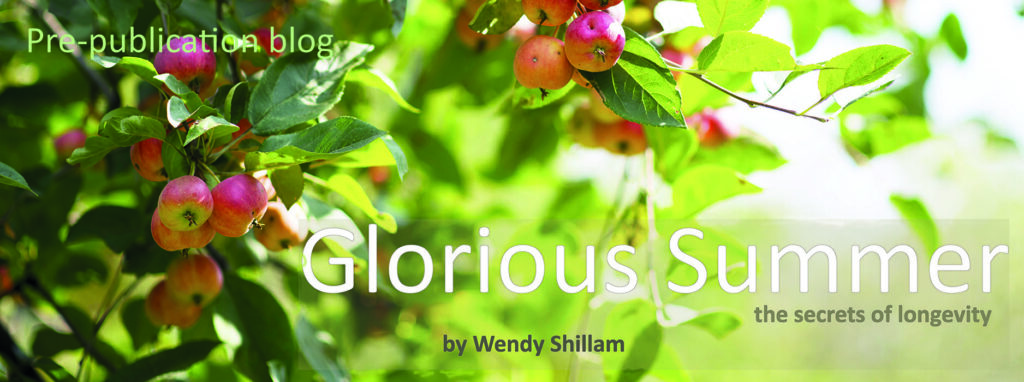All day, every day, our cells are performing a metabolic balancing act. In fact, every cell, in every living thing, performs the same task. Nature is wonderful. Our metabolic rate isn’t regulated by just one system. The human body possesses trillions of metabolic clocks, ticking away within every single cell in the body. Each cell has its own time-signature and its own programme. While one cell or set of cells may be declining or slowing down in our bodies, new cells are speeding up, forming and thriving elsewhere. Some cells run fast; some have slower metabolisms. We live because the balance of healthy cells within us predominates. We die when critical groups of cells cannot be delivered of the nutrients, water or oxygen that supports life. Every micro-second of every day, every cell within your body is working to achieve a balance between using its energy wisely, and fulfilling its purpose. That balance is called homeostasis, and is displayed in our ability to regulate things such as body temperature or heartrate, within extremely precise limits.
It is when the body experiences something to unbalance us, that the really interesting stuff begins. Plunge yourself into the waters of an icy lake on a winter’s day, and your metabolism will experience a shock. Adrenalin will immediately flow through your veins to speed up your metabolism. Your heart will race, your breathing will quicken. Suddenly you need every bit of energy your body can muster in order to keep your body temperature within safe parameters. The body uses glucose to generate immediate energy. Glucose flows freely in the blood stream to service every cell within the body. We call this blood sugar and it is the principal readily available source of energy. When blood sugar starts to run low it is replenished, direct to the blood supply, from glycogen, which is the short-term energy store in the liver. The glycogen store can keep you going for a day or so, if food supplies run short and only then will the body start to break down adipose tissue, to release glycerol back into the blood stream.
Once you reach the shore and dry off, you are likely still to have cold fingers and toes. You might take a hot drink and once again the metabolism will be working hard to distribute the heat from the liquid so that it can warm your extremities. But something else less abrupt will be happening as well. In order to guard your body against the cold and the exertion of a winter swim the calories in your coco will be used to replace the energy stores that have been dramatically used up.
When we get older, or if we start to suffer from metabolic diseases such as diabetes, the system becomes creaky. In particular, systems that regulate energy distribution in the body stop working efficiently. The body cannot switch so easily between energy need and energy storage. Older people start to feel the cold more often, they require a little nap after lunch to give their digestion the energy it requires to digest. They put on fat and lose muscle mass. They become frail.
Our arm and leg muscles are a source of emergency energy. As time goes by it becomes all too easy for that muscle to atrophy and when we eat, the body becomes less efficient at replacing and re-strengthening muscle. This may be why some people believe that the body benefits from exercising the metabolism. There are many advocates of cold-water swimming, or saunas followed by cold showers or a roll in the snow. Plunge your watch into the same cold lake and unless it is waterproof it will ‘die’ right there are them. Electronics cannot withstand the temperature shocks that the human body can (let alone the drenching).
While the jury is still out with regards to cold water swimming, there is now plenty of evidence that other metabolic functions switch on and off all day (and not necessarily in unison). For example, the groups of cells that secrete insulin from the pancreas, called the islets of Langerhans, are forever engaged in a tightrope act. If they secrete more insulin than is needed, glucose in the body is used up too quickly, and we may run out of energy before the next meal. If insulin is secreted too slowly, the glucose in our blood will be transported to adipose tissue and turned into fat, rather than giving us energy. Eating regular meals during the day provides an even intake of glucose that is found in all types of carbohydrate food. In extremis the body can turn fats and protein into glucose, but this process is a back-up, not a substitute. Regular, healthy balanced meals mean you will have the energy and all the nutrients you need to work, rest and play right around the clock.
At night, while we are sleeping, and energy requirements for activity are lowered, is a time for the metabolism to re-calibrate. We still use up energy while we sleep. If you were to continue eating snacks throughout the night, your metabolism would simply store the excess glucose as glycerol in the liver and transport more glucose as triglycerides (fat) to your adipose tissue. But the homeostatic cycle goes on in every cell all the time. The brain in particular is a very energy hungry organ and requires energy every second of every day, even when we are enjoying deep and dreamless sleep.
The outcome of eating too much (of any food group), is that you get fat. This decreases your chances of longevity. The outcome of eating too little, is that you lose weight. Being overweight or undernourished (you can be both) is a dangerous risk factor for many diseases and early death.
Many people have found their metabolism has slowed during lockdown. We have been forced to stay in – to become too sedentary. And some people have found they have gained weight, and that their weight gain is fat, not extra muscle. My advice, as a seasoned clinical nutritionist, is to act now. The longer you leave it, the worse it sets. Fasting or cutting out one food group (be it chocolate or protein) won’t work. Increasing your activity, without reducing your diet won’t work. You’ll just put all the weight back on again when you finish your ill-advised diet or over strenuous exercise routine. Even plunging into an ice-cold lake every morning won’t do the trick unless you also learn to eat healthily, regularly and find activities you can enjoy and afford the time and money to practice long term. Expensive gym memberships and personal trainers are hardly ever sustainable solutions. If you are a woman over forty, then feel free to follow the completely free nine-week diet programme here.
I’ve been busy using lockdown to write a book about why sensible programmes for eating and moving can be used as a recipe for long term health. I hope my readers are now looking forward to reading the book Glorious Summer – the secrets of longevity. It will be published in January next year. In the meantime do link to these blogs and read the other free information on Say Tomato!, while you look forward to your own glorious summer.
This year I shall be maintaining a weekly blog, covering pre-publication excerpts from the book as well as a series of articles about the science and the scientists who have unlocked the secrets of longevity. Please register your interest by clicking on the mailing list below.
A beta reader is a test reader of an unreleased work (similar to beta testing in software), who gives feedback to the author, from the perspective of an average reader. If you’d like to help me get this book as good as it can be, I’d love to hear from you. You’ve got plenty of time to make up your mind. The chapters will be ready from June onwards. I’m sorry there is no fee for this work, except a free copy of the finished book and an acknowledgement. This is not a commercial exercise. Say Tomato, the publisher of the book and of the website is run as a self-financed social enterprise. I shall be eternally grateful. Any profits from Glorious Summer will be directed into Say Tomato’s work for women over 40.
Contact me directly wendy@wendyshillam.co.uk if you are interested, giving a brief description of yourself and your reading experience. (It doesn’t matter if you haven’t done any beta reading before – avid readers make the best beta readers.) Thank you.


Wendy Shillam
Trained in environmental and bio-sciences, at Bristol Univeristy and University College London, Wendy Shillam is a registered clinical nutritionist, specialising in longevity. She is the founder of the social enterprise Say Tomato! that provides free and trusted weight loss advice for women over forty. This part of the blog is a precursor to publication of her book, Glorious Summer – the secrets of longevity. You can read about it here.
